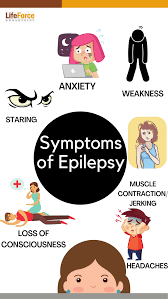Epilepsy and Seizures Can Diet and Nutrition Help
Can Diet and Nutrition Help with Epilepsy and Seizures?
 The word epilepsy derives from the Greek word epilepsia, which means “to take hold of” or “to seize.” Epilepsy is not a disease in itself, but rather a symptom of disease. The epilepsies are a group of disorders characterized by sudden, recurrent, and episodic changes in neurologic function caused by abnormalities in the electrical activity of the brain. Each episode of neurologic dysfunction is called a seizure. Seizures are termed convulsive when accompanied by motor manifestations or nonconvulsive when accompanied by sensory, cognitive, or emotional events. Epilepsy can occur due to a number of abnormalities such as neurologic injuries, structural brain lesions, or some systemic diseases. Epilepsy is termed idiopathic when there is neither a history of neurologic insult nor other apparent neurologic dysfunction. Whatever the etiology, the common denominator in all these conditions is the epileptic attack or seizure.
The word epilepsy derives from the Greek word epilepsia, which means “to take hold of” or “to seize.” Epilepsy is not a disease in itself, but rather a symptom of disease. The epilepsies are a group of disorders characterized by sudden, recurrent, and episodic changes in neurologic function caused by abnormalities in the electrical activity of the brain. Each episode of neurologic dysfunction is called a seizure. Seizures are termed convulsive when accompanied by motor manifestations or nonconvulsive when accompanied by sensory, cognitive, or emotional events. Epilepsy can occur due to a number of abnormalities such as neurologic injuries, structural brain lesions, or some systemic diseases. Epilepsy is termed idiopathic when there is neither a history of neurologic insult nor other apparent neurologic dysfunction. Whatever the etiology, the common denominator in all these conditions is the epileptic attack or seizure.
The reported incidence and prevalence rates of epilepsy have varied widely because of uncontrolled methodologic factors. According to the best available data, the prevalence of chronic, recurrent epilepsy is about 10 per 1000, and it has been estimated that 10% of the population will have one or more seizures at some point in life. The cumulative lifetime incidence of epilepsy is approximately 3%. An additional 2% to 5% of children experience febrile convulsions during the first several years of life. About 10% of these children, especially those in whom the febrile seizure is prolonged, develop epilepsy later in life.1 Prospective studies show that more than 60% of newly diagnosed patients enter remission with conventional treatment.
Epileptic patients should be advised to avoid situations that could be dangerous if further seizures occur. Also, they should be made aware of state laws regarding epilepsy and driving. Epileptics should avoid known initiators of seizure activity (e.g., bright flashing lights, sudden loud sounds). Therapy should continue at full dosages until the patient has been seizure free for at least 2 years. Dosage reduction should then be gradual over a period of several months. Epileptics who are not controlled with natural therapies require drug therapy.
Patients should eliminate pyridoxine antagonists: isoniazid, cycoserine, hydralazine, dopamine, oral contraceptives, alcohol, and hydrazine dyes (Food, Drug, and Cosmetic Act yellow no. 5).
Note: Status epilepticus, a prolonged seizure lasting longer than 30 minutes that is not likely to stop spontaneously, is a medical emergency that inevitably results in serious neurologic damage or death if untreated. Immediate hospitalization is required, preferably with ambulance or aid car transport, with the necessary equipment to maintain the patient’s airway, assist in ventilation, and administer intravenous glucose and antiepileptic drugs.
Because endogenous depression is more prevalent in persons with epilepsy than in the general population, monitoring for depression illness is important in epileptic patients.
Nutritional Interventions
The role of conventional medical treatments for epilepsy and seizure disorders is undeniable, but not all patients respond, nor do they choose medical treatments. The scientific literature contains substantial proof that diet and nutrition may play a significant role in these disorders. The information appearing in this article is generalized and is not specific to any individual and is meant only for educational purposes. A specially trained integrated practitioner can help identify how the information below, as well as other aspects of holistic therapies, may be helpful or neurological disorders such as epilepsy and seizures.
Diet
All sugar and other refined carbohydrates should be eliminated, and protein levels should be moderate. Food allergens should be identified and eliminated. Small, frequent meals are best. If a ketotic effect is desired, all carbohydrates should be strictly limited and fat intake increased. Furthermore, adequate intake of energy and protein, plus a higher proportion of omega-3 unsaturated to saturated dietary fats, should be assured. Finally, vitamin and mineral supplements should be used with ketotic diets (ketotic diets should only be used under professional supervision).
Lifestyle
Regular sleep patterns should be encouraged.
Nutritional Supplements – The dosages are not specific for individuals. Specialized laboratory and other types of tests are necessary for optimal determination of dosage.
- Vitamin B6: 50 mg three times/day
- Folic acid: 0.4 to 4 mg/day
- Vitamin E: 400 IU/day
- Taurine: 500 mg three times/day
- Magnesium: 300 mg three times/day
- Manganese: 10 mg three times/day
- Selenium: 100 μg/day
- Zinc: 25 mg/day
- Melatonin: 3 mg in children, increase up to 20 mg or more in adults
Botanical Medicines
- G. biloba: contraindicated at this time